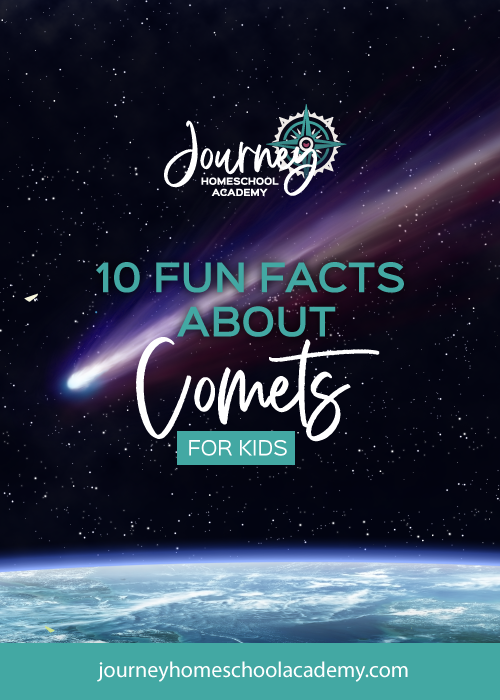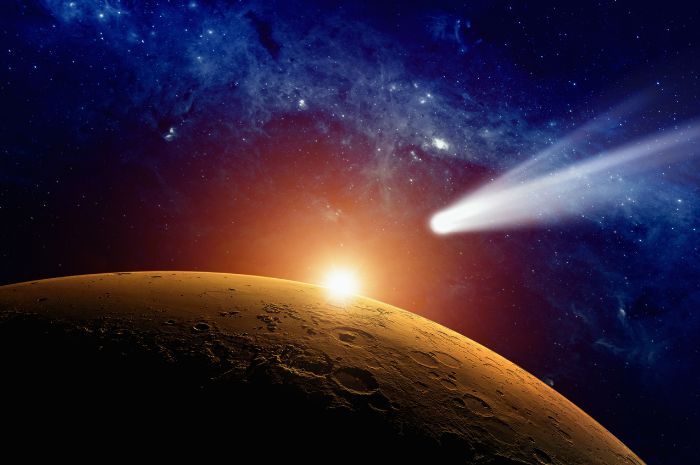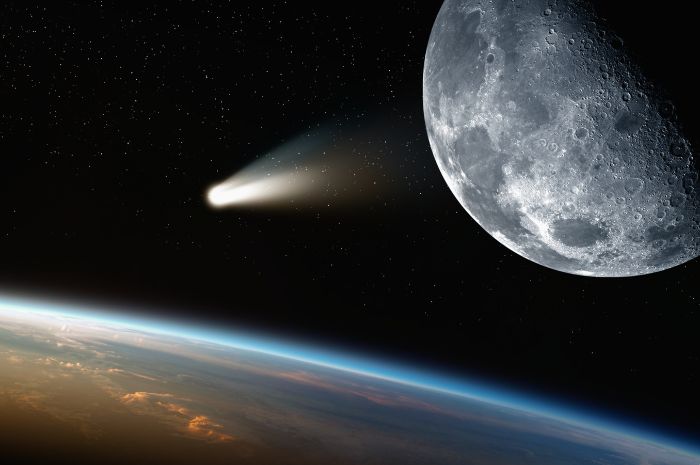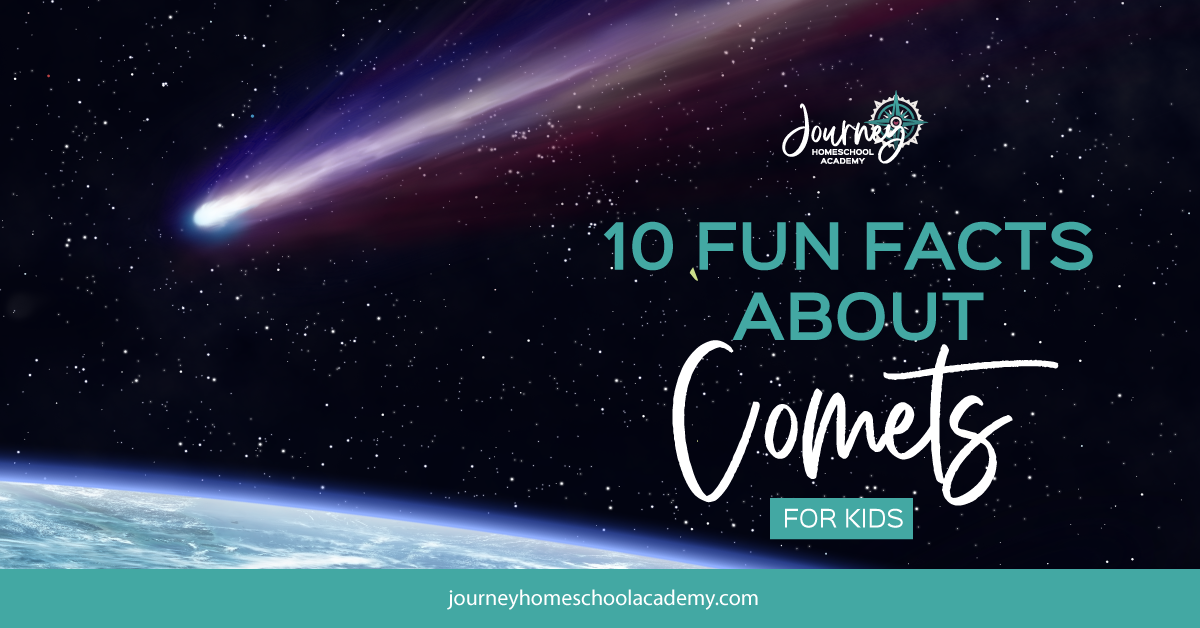To the naked eye, a comet sighting is rare and actually quite boring. It’s not the big “shooting star ball of light” that we see in books and movies. However, that doesn’t mean that comets should be ignored. If anything, it gives us a greater reason to dig deep into the science behind comets and how they function in our solar system.

To gain a better appreciation for the parts of a comet and the difference between comets and asteroids, here are 10 fun facts about comets!
10 Fun Facts About Comets
1. There are four “parts” to a comet.
The nucleus, coma, dust tail, and ion tail (see fun fact #3 for more about the tails) make up the parts of a comet. The nucleus holds the majority of the weight of the comet since it is composed of ice and rock material.
2. Comets orbit the sun.
Like the planets of the solar system, comets orbit the sun. They do so in an elliptical manner that mimics the shape of a squished circle.

3. Comets have two tails!
Traditional picture books show a bright ball of “fire” with a long tail extending from it. In reality, comets have two tails, thanks to dust particles collected by the sun’s magnetic field and solar wind. These particles are also a result of the evaporation that inevitably occurs when comets orbit close to the sun.
4. Unlike asteroids, comets have a mixed composition.
This is a key difference between comets and asteroids. While asteroids are made up of just rock, comets are a mixture of ice, rock, and gas.
5. The Kuiper Belt houses a TON of comets.
Surprisingly, astronomers have only identified a few thousand comets. But just outside of the planet Neptune’s orbit is an “icy ring” that is believed to contain billions (if not more!) of comets.

6. The Oort Cloud has a TON of comets, too.
Not enough comets for you in the Kuiper Belt? Then check out the Oort cloud.
Although it’s not an actual cloud like we see in the sky, the Oort cloud is an icy, spherical shell that sits on the outskirts of what we know to be the solar system. Inside this shell are billions of comets, even more than in the Kuiper Belt!
7. Halley’s comet was the first to be photographed up close by spacecraft.
First sighted in 1758, Halley’s comet was named after English astronomer Edmond Halley. Unfortunately, Edmond Halley didn’t live to see his prediction for this comet, but Halley’s comet was named in his honor. Today, Halley’s comet can only be viewed every 75 years or so!
8. “Great comets” can be seen without a telescope!
Although we normally cannot see comets with the naked eye, a great comet can be viewed from Earth without a telescope. It’s important to note, however, that great comets only appear an average of once a decade. Check here for upcoming comet sightings!

9. Most comets are only a few miles wide.
At first, this might seem shocking…only a few miles?! That seems pretty big to me! But in comparison to the size of the planets and other celestial objects, a few miles is quite small. This really puts our life on Earth into perspective as even our houses are mere grains of sand in comparison to the sheer size of the solar system.
10. Comets take a very long time to orbit the sun.
It takes Earth 365 days (one year) to orbit the sun. Comets, however, can take a couple hundred years or more to complete one orbit around the sun. Comets that take less than 200 years to orbit are called “short-period comets”; those that take longer than 200 years are called “long-period comets.”

Learn More About Our Solar System With Experience Astronomy!
If you enjoyed these facts about comets, just wait until you learn about the rest of the solar system! At Journey Homeschool Academy, our aim is to make science both fun and highly educational. Experience Astronomy: Elementary is a jam-packed astronomy course that will engage young minds and leave your entire family in awe of the wonders of the solar system and beyond.
Through weekly video lessons, outside-the-box activities, and an extensive living book reading list, your younger students will be fully equipped with a better understanding of the world of astronomy. Comets are only the beginning!
